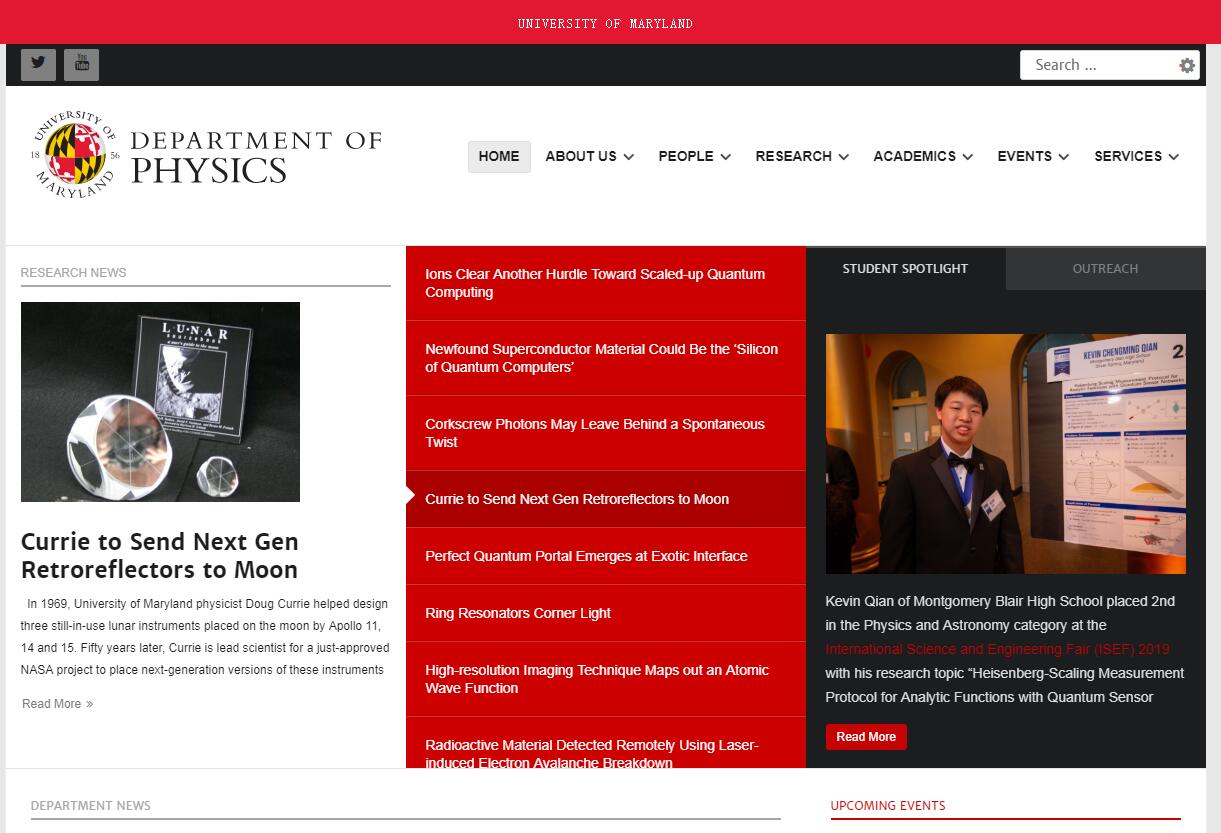On TopSchoolsintheUSA.com, you can learn what the top-ranked physics colleges and universities are in Maryland, and compare the best physics colleges, and get the latest ranking of best schools for physics in Maryland. From the following table, please see full list of top 3 graduate schools of physics in Maryland including school information and contact profile.

| RANKING | GRADUATE PHYSICS |
| 1 | University of Maryland–College Park, Department of Physics Address: 1120 John S. Toll Physics Building , College Park, MD 20742 Phone: (301) 405-3401 Email: info@physics.umd.edu Website: http://www.physics.umd.edu |
| 2 | Johns Hopkins University, Henry A. Rowland Department of Physics and Astronomy Address: 3400 N. Charles Street , Baltimore, MD 21218 Phone: (410) 516-7344 Email: admissions@pha.jhu.edu Website: http://physics-astronomy.jhu.edu |
| 3 | University of Maryland–Baltimore County, Department of Physics Address: 1000 Hilltop Circle, Baltimore, MD 21250 Phone: (410) 455-2513 Email: physics@umbc.edu Website: http://physics.umbc.edu |
Maryland after U.S. Independence
In the sixties and seventies of the XVIII century in Maryland, as in other American colonies of Great Britain, dissatisfaction with the metropolitan government was growing. Despite the rather large number of loyalists (supporters of the crown), the number of patriots who spoke in one form or another against unjust, in their opinion, laws was constantly increasing. On October 19, 1774, a merchant ship arriving from London was burned in Annapolis along with a cargo of tea – it was a kind of repetition of the Boston Tea Party. ” 1773. On July 4, 1776, together with other members of the Continental Congress, four delegates from Maryland signed the Declaration of Independence of the United States. During the years of the Revolutionary War, no hostilities took place on the territory of Maryland, but the volunteers of the state proved to be excellent in the ranks of the army of General Washington.
Maryland has long refused to ratify the “Articles of Confederation” that proclaimed the United States of America as a confederation of sovereign states. The reason for this was the claims of Virginia, Connecticut, Massachusetts, and New York to the Northwest Territories (modern-day Wisconsin, Indiana, Illinois, Michigan, Minnesota, and Ohio) and their possible increase in influence. Only after the abandonment of these claims in favor of the federal government of Maryland March 1, 1781, the last of the “thirteen colonies”, ratified the “Articles”. There were no problems with the ratification of the US Constitution, the Maryland legislators passed the corresponding decision on April 28, 1788, thus making Maryland the seventh state of the United States.
For a short time, from November 26, 1783 to June 3, 1784, Annapolis was actually the capital of the United States of America – here, in the state Capitol building, the Congress of the Confederation worked. In 1790, Maryland allocated land to the US government for the construction of the new capital of the state – the city of Washington.
During the Anglo-American War of 1812-15 (known as the “Second American Revolutionary War”), two important battles took place in Maryland. The first of these is the Battle of Bladensberg on August 24, 1814. The Americans were then defeated, which allowed the British to capture Washington and burn many of the city’s important buildings (including the White House and the Capitol). This episode is considered one of the saddest and most shameful defeats of American weapons.
On September 13, 1814, the British tried to capture Baltimore by land, but faced with a powerful defense of the city’s defenders, they were forced to retreat. At the same time, nineteen ships of the British Navy began bombarding Fort McHenry, which was protecting the harbor of Baltimore. The shelling continued for more than a day, after which a landing was made, but the defenders of the fort successfully repelled the attack. During the defense of the fort, a flag was raised over it, which entered the history of the United States as the ” Banner Spangled with Stars “. Realizing the futility of further hostilities, the British ships left.
The siege of Fort McHenry was observed from the British flagship by an American lawyer and amateur poet, Francis Scott Key, who participated in the negotiations on the exchange of prisoners. What he saw inspired him to write the poem “The Defense of Fort McHenry”, which later became the US anthem.
